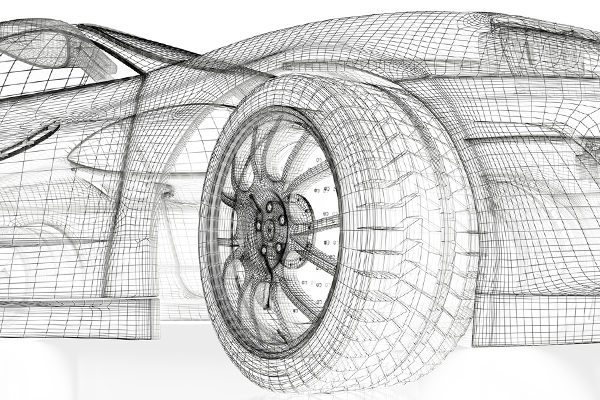Since most drivers don’t regularly check for proper tire inflation, TPMS has been developed to remotely monitor vehicle tire pressures and alert the driver of under-inflation conditions.
Comparing Indirect and Direct TPMS
Indirect TPMS detects under-inflation by using the speed sensors in the anti-lock braking system (ABS) to compare wheel rotating speeds. An under-inflated tire has a slightly smaller diameter, thus it rolls at a different rate from properly inflated tires. The system alerts the driver when it detects an under-inflation condition, but it generally cannot detect tire deflation until the tire is at least 25 percent under-inflated. Indirect TPMS is inexpensive and easy to install, however it cannot localize measurements on individual tires, and it’s not as accurate as direct TPMS. What’s more, the user has to reset the system every time the tires are changed, rotated or re-inflated.
Direct TPMS employs pressure sensors installed on the wheel rims to provide independent, real-time air pressure measurements for each tire. The data can then be transmitted to the vehicle instrument cluster to instantly inform the driver. Direct TPMS can also employ additional components, such as microcontrollers (MCUs) and radio frequency (RF) devices, to expand the capabilities of the system. The optimal TPMS solution includes:
- Sensors for measuring pressure and temperature inside the tire
- Sensors to detect wheel speed and/or direction of rotation
- Controller with time base for periodic measurements
- Means to identify which tire is providing the data
- Data output to the vehicle chassis
- Command input for diagnostics and wake up
- Power source
The NXP Direct System-in-Package (SiP) TPMS
Our MPXY8300 TPMS is the first of its kind to integrate a pressure sensor, an 8-bit MCU, an RF transmitter and a 2-axis (XY) accelerometer all in one package. NXP is also the first to provide tire localization and capacitive sensor technology for precise pressure and acceleration measurement.
By combining the necessary features into one package, our customers can design compact wheel-mounted TPMS modules that can be more easily integrated into the automakers’ overall vehicle designs. The MPX8300 TPMS solution is ideal for any vehicle using inflatable tires, from the family automobile to a heavy commercial truck. It offers:
- Precise pressure measurements—The low-power surface micromachined capacitive pressure sensor’s pressure cell (p-cell) measures pressure range from 100 to 800 kilopascals (kPa). The TPMS also offers high-pressure range p-cells for truck tires (100-1400 kPa) and optional reduced accuracy calibration for lower cost applications. Our capacitive surface micro-electro mechanical systems (MEMS) technology also offers significant power usage advantages over piezoresistive bulk MEMS. These include 0.14 micro-amp (µA) supply current (3V, 30 KHz) versus 600 to 10,000 µA and 0.9 nano-amp-second (nAs) minimum charge per reading versus 60 to 1000 nAs for piezoresistive bulk MEMS.
- Tire localization capability—The fully integrated MPXY8300 TPMS modules provide independent pressure measurements for each individual tire, including the spare. Each module integrates a 315/434 MHz phase-locked-loop (PLL)-based RF transmitter that ensures continuous communication, even after the tires have been rotated or replaced. The integrated motion sensors can also be programmed to transmit measurements at certain speeds (tire rotations), including that for tires that are not rotating at all.
- Accelerometers—The MPXY8300 is the first TPMS to employ acceleration sensors. These are essential when exploiting tire localization capabilities, and they enable the system to be customized for specific driving conditions and speeds, offering X-axis sensitivity to ±10 gravities (g) and Z-axis sensitivity from 0-60 g with adjustable offset. Developers have the option to utilize an MPXY8300 TPMS with X- and Z-axis g-cells, Z-axis g-cell only or a system without g-cells.
- Extended battery life—The MPXY8300 incorporates low frequency oscillations driving a low-power wake-up timer and periodic reset driver plus TPM specific power management techniques to ensure a long battery life for more convenient and economical operation.

The MPXY8300 TPMS is a new standard for improved vehicle safety. NXP utilizes its advanced integration techniques to provide a compact system-in-package (SiP) that provides real-time tire pressure monitoring and alerts the driver to improperly inflated tires. Compliant with the FMVSS 138 guidelines, the MPXY8300 TPMS integrates with existing remote keyless entry (RKE) systems, helping automakers and their suppliers more easily deploy TPMS in new model cars and trucks around the world.








